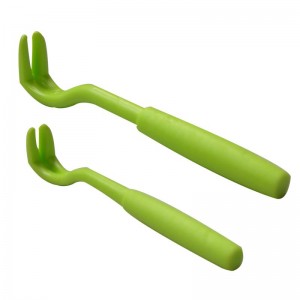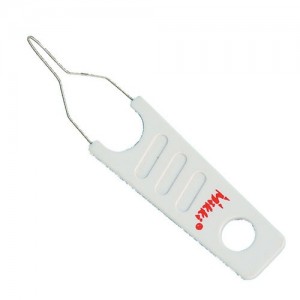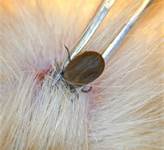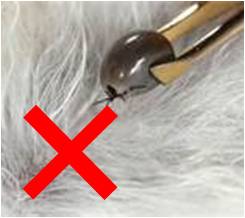It is important a tick is removed promptly and all parts of the tick’s body are removed to prevent it releasing additional saliva or regurgitating its stomach contents into the bite wound.
DO use a tick removal tool* (available from your vet and pet shop), and follow the instructions provided. Below are two common removal tools


These tools grip the head of the tick without squashing the body

(* Alternative Option: Using pointed tweezers grasp the tick as close to the skin as possible without squeezing the tick’s body, pull the tick out without twisting – there may be considerable resistance)
Illustrations are for general guidance and do not represent any particular species.
If no tools are available, use a cotton thread rather than delaying the removal. Tie a single loop of cotton around the tick’s mouthparts, as close to the skin as possible, then pull gently upwards and outwards.
DO’s
Clean the tick remover with antiseptic before and after use
Clean the bite site with antiseptic after removal of tick
Wash hands thoroughly afterwards
DONT’S
 Squeeze or twist the body of the tick, as this may cause the head and body to separate, leaving the head embedded in your skin
Squeeze or twist the body of the tick, as this may cause the head and body to separate, leaving the head embedded in your skin
Use your fingernails to remove a tick. Infection can enter via any breaks in your skin, e.g. close to the fingernail
Crush the tick’s body, as this may cause it to regurgitate its infected stomach contents into the bite wound
Try to burn the tick off, apply petroleum jelly, nail polish or any other chemical. Any of these methods can cause discomfort to the tick, resulting in regurgitation, or saliva release
In addition to the above, you may wish to save the tick in a container in case your vet asks for evidence